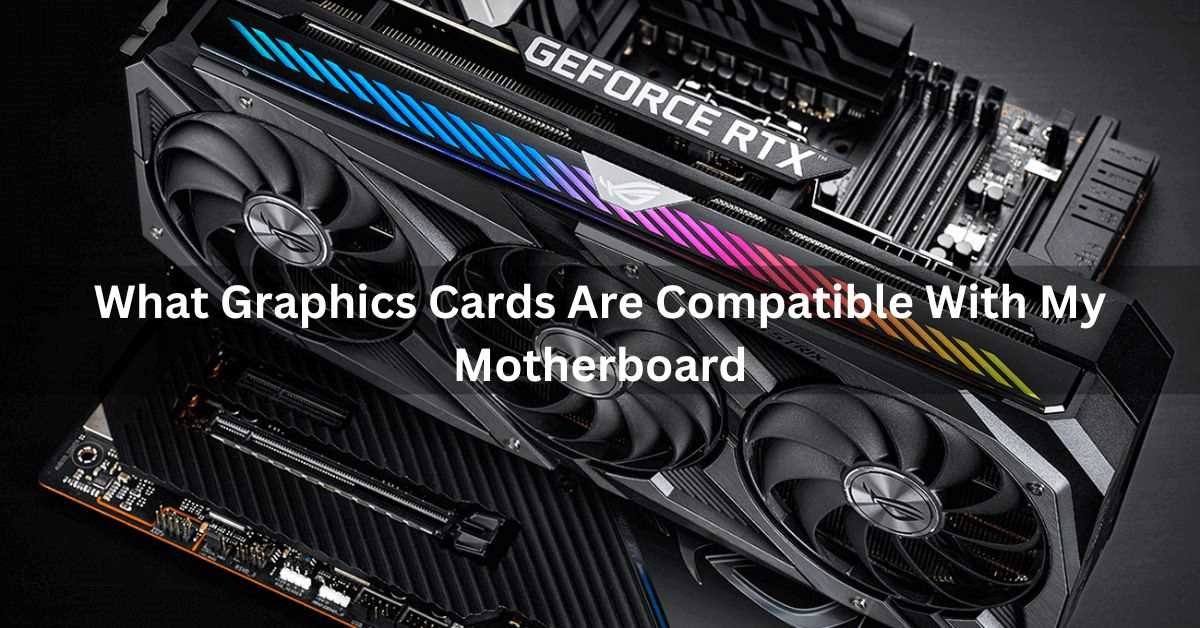Graphics cards and motherboards are crucial components of any computer system, working hand in hand to deliver smooth and immersive computing experiences. However, ensuring compatibility between these two components is paramount for optimal performance and functionality.
To find compatible graphics cards for your motherboard, check its specifications online or in the manual. Look for PCIe slots and match them with the graphics card’s interface.
In this article, we will discuss “What Graphics Cards Are Compatible With My Motherboard”.
Understanding Compatibility:
When it comes to graphics cards and motherboards, compatibility refers to the ability of these components to work seamlessly together without any technical issues. Understanding compatibility involves delving into various aspects.
1. Types of Graphics Card Slots:
Graphics cards are typically installed in PCI Express (PCIe) slots on the motherboard. These slots come in different sizes, including PCIe x16, PCIe x8, and PCIe x4, each offering varying bandwidths and capabilities.
Read: Should I Connect HDMI to GPU or Motherboard – Complete Guide!
2. Factors Influencing Compatibility:
Several factors influence compatibility between graphics cards and motherboards, including the physical dimensions of the graphics card, the power supply requirements, and the BIOS support.
Motherboard GPU compatibility:
Motherboard GPU compatibility refers to whether the motherboard can support the installation and operation of a graphics processing unit (GPU).
It depends on factors like the motherboard’s PCIe slots, power supply connectors, and BIOS support for graphics cards.
GPU compatibility with CPU:
The compatibility of the GPU with the CPU depends on the motherboard’s support for the CPU’s socket type and the GPU’s interface (usually PCIe). Ensure your CPU and motherboard can accommodate the GPU you intend to use for optimal performance.
Read: Asrock Motherboard Wifi Not Working - Complete Guide - 2024
Understanding Graphics Card Specifications:
Graphics cards come with various specifications that dictate their compatibility with motherboards.
1. GPU Interface:
The GPU interface, such as PCIe 3.0 or PCIe 4.0, should match the PCIe slots available on the motherboard for optimal performance.
2. Form Factor and Dimensions:
The physical dimensions of the graphics card, including its length, width, and height, should fit within the available space in the computer case.
How do I know which graphics card will support my motherboard?
To find out which graphics card will support your motherboard, check its PCIe slot type, power supply capacity, and physical space.
Match these specifications with the requirements of the graphics card you’re considering to ensure compatibility and smooth operation.
How do I know which graphics card is compatible with my computer?
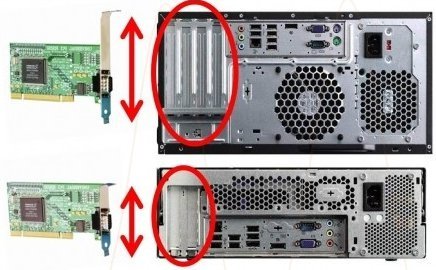
To determine graphics card compatibility with your computer, check your motherboard’s PCIe slot type, power supply wattage, and physical space.
Match these specifications with the requirements of the graphics card you want to ensure compatibility and optimal performance.
13 Types of Motherboard Slots and How They’re Used:
Here are 13 types of motherboard slots and their uses:
1. PCIe x16: For graphics cards
2. PCIe x1: Expansion cards
3. PCIe x4: High-speed peripherals
4. PCIe x8: High-performance devices
5. PCI: Legacy expansion cards
6. RAM slots: Memory modules
7. M.2: SSD storage
8. SATA: Hard drives and SSDs
9. USB headers: USB ports
10. CPU socket: Processor connection
11. Power connectors: Power supply
12. Front panel connectors: Case buttons and LEDs
13. CMOS battery: BIOS settings backup
What Happens if My GPU and Motherboard Are Incompatible?
If your GPU and motherboard are incompatible, you may experience issues like the GPU not fitting into the motherboard slot, power supply problems, or system instability. It’s crucial to ensure compatibility for optimal performance.
Read: Can Old Motherboard Support New GPU – Ultimate Guide – 2024
What Determines GPU and Motherboard Compatibility?
GPU and motherboard compatibility depend on the motherboard’s PCIe slot type, power supply capacity, and physical space. Ensure the GPU matches these specifications to ensure proper connection and functionality.
Read: Is Asrock A Good Motherboard – Complete Guide – 2024
What Graphics Cards Are Compatible With My PC?
To find out which graphics cards are compatible with your PC, check your motherboard’s PCIe slot type, power supply wattage, and physical space.
Then, match these specifications with the requirements of the graphics card you’re interested in to ensure compatibility.
What GPU can my motherboard support?
Your motherboard’s compatibility with GPUs depends on its PCIe slot type, power supply, and physical space. Check your motherboard’s specifications to determine which GPUs it can support effectively.
How do I know what GPU is compatible with my motherboard?
To check GPU compatibility with your motherboard, first identify the PCIe slot type (like PCIe x16). Then, verify the GPU’s requirements and compare them with your motherboard’s specifications. Ensure the slot type, power supply, and physical space meet GPU needs.
Do You Have PCIe x16?
Yes, we have PCIe x16. It’s a type of slot in computers. It’s used for connecting graphics cards and other high-speed peripherals to the motherboard.
How Much Space in Your Case?
How much space in your case? Check dimensions to ensure components fit comfortably. Consider airflow and cable management. A well-fitted case enhances performance and keeps your system running smoothly.
Read: Do Motherboards Have Bluetooth – Ultimate Guide – 2024
PSU Wattage Estimates:
PSU Wattage Estimates: Calculate how much power your system needs. Consider components like CPU, GPU, and drives. Aim for a power supply unit with sufficient wattage to support your setup reliably.
Do You Have The Right PSU?
Do you have the right power supply? Make sure your device gets enough power. Check if your power supply unit matches the requirements and can handle the workload effectively.
Are all graphics cards compatible with all motherboards?
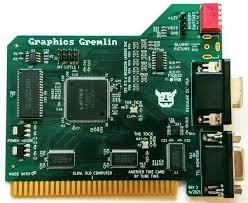
No, not all graphics cards are compatible with all motherboards. Compatibility depends on factors like the card’s slot type (e.g., PCIe), size, power requirements, and the motherboard’s BIOS version. Check these details before purchasing.
What Graphics Cards Are Compatible With My PC?
To find a compatible graphics card for your PC, check your motherboard’s slot type (usually PCIe), power supply capacity, and case size. Ensure your power supply can handle the card and that it fits in your case.
Will my OLD motherboard be compatible with newer Video Cards? How can I tell?
Your old motherboard might work with newer video cards if it has a PCIe slot. Check the motherboard’s BIOS version, power supply, and physical space in your case to ensure compatibility with the new card.
How do you tell if a GPU will fit?
To check if a GPU will fit, measure the space inside your computer case. Compare these measurements with the GPU’s length, width, and height. Also, ensure your motherboard has the correct slot type and enough power connectors.
Can a GPU be incompatible with a motherboard?
Yes, a GPU can be incompatible with a motherboard if it doesn’t fit the slot (like PCIe), needs more power than the motherboard or power supply can provide, or if the BIOS doesn’t support the GPU.
Can I use any graphics card with any motherboard?
No, you can’t use any graphics card with any motherboard. Compatibility depends on the motherboard’s slot type (usually PCIe), power supply, BIOS support, and physical space in the case. Always check these factors before buying.
Can an old GPU be incompatible with newer motherboards?
Yes, an old GPU can be incompatible with newer motherboards. Issues may include different slot types, lack of BIOS support, or insufficient power supply connections. Always check the motherboard’s specifications and compatibility before using an old GPU.
Does the motherboard matter for GPU?
Yes, the motherboard matters for the GPU. It must have the right slot type (usually PCIe), BIOS support, and enough space and power connections to fit and run the GPU properly. Always check compatibility before buying.
Does all dedicated GPUs work with any motherboard?
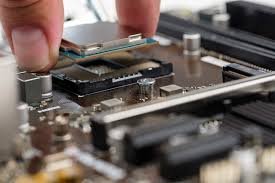
No, not all dedicated GPUs work with any motherboard. Compatibility depends on having the correct slot type (usually PCIe), enough power supply, proper BIOS support, and sufficient physical space in the case. Always check these factors first.
Can I run 12 GPUs on one motherboard?
No, you can’t typically run 12 GPUs on one motherboard. Most motherboards support only a few GPUs due to limitations in PCIe slots, power supply capacity, and system stability. You may need specialized hardware for such a setup.
Motherboard and GPU Compatibility:
Motherboard and GPU compatibility is crucial. Check if the motherboard has the right slot type (usually PCIe) for the GPU.
Ensure the motherboard BIOS supports the GPU, and verify power supply and physical space requirements for a successful match. Always check compatibility before purchasing.
GPUs compatible with my motherboard:
To find GPUs compatible with your motherboard, check its slot type (typically PCIe). Verify power supply capacity and physical space in your case.
Ensure BIOS compatibility as well. Refer to the motherboard’s specifications or use online compatibility tools for accurate results.
Which graphics cards are compatible with my motherboard?
To determine which graphics cards are compatible with your motherboard, check its slot type (usually PCIe), power supply capacity, and physical space in the case. Consult the motherboard’s specifications or use online compatibility tools for accurate information.
Will my graphics card fit my motherboard?
To see if your graphics card will fit your motherboard, check if they have matching slot types, usually PCIe. Ensure your power supply can handle the card’s requirements and that your case has enough space. Always verify compatibility before installing.
Does gpu need to be compatible with motherboard?
Yes, a GPU needs to be compatible with the motherboard. Compatibility ensures the GPU fits the motherboard’s slot type (usually PCIe), has the necessary power connections, and is supported by the BIOS for proper functionality. Always check compatibility before installation.
How to know if gpu is compatible with motherboard?
To check if a GPU is compatible with a motherboard, verify if they share the same slot type (typically PCIe), ensure the power supply can support the GPU’s requirements, and check for BIOS compatibility. Consult the motherboard’s specifications or use online compatibility tools for confirmation.
How do i know what graphics card is compatible with my motherboard?
To find out what graphics card is compatible with your motherboard, check the motherboard’s specifications for the type of slot it has (usually PCIe). Ensure your power supply can support the graphics card’s requirements and verify BIOS compatibility.
How to tell if a graphics card is compatible with my motherboard?
To determine if a graphics card is compatible with your motherboard, check if they have matching slot types (often PCIe), ensure your power supply can handle the card’s needs, and verify BIOS support. Consult your motherboard’s specifications for compatibility information.
How to check if motherboard supports graphics card?
To check if a motherboard supports a graphics card, look for PCIe slots on the motherboard. Check the motherboard’s specifications to confirm compatibility with the graphics card’s slot type, power requirements, and BIOS support.
Are Your Other Components Good Enough?
Yes, everything else okay? All parts need to work well together for success. Check if others meet standards and perform properly for the best results.
How do I find the best graphics card for my motherboard?
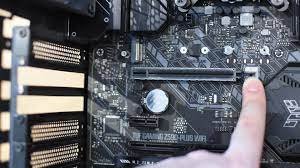
To find the best graphics card for your motherboard, check its specifications for PCIe slot type and power supply capacity. Match these with the graphics card’s requirements for optimal compatibility.
Read: How Long Does A Motherboard Last – Complete Guide – 2024
Motherboard/CPU and GPU compatibility:
To ensure compatibility between motherboard/CPU and GPU, check motherboard specifications for PCIe slots and CPU socket type. Match GPU interface with PCIe slot, and consider CPU performance for optimal pairing.
Read: Are Asrock Motherboards Good – Complete Guide of 2024!
Graphics card and motherboard compatibility?
Graphics card and motherboard compatibility depend on the motherboard’s PCIe slot type and power supply connectors. Ensure the GPU’s interface matches the PCIe slot and that the motherboard can supply sufficient power.
Read: Are Gigabyte Motherboards Good – Ultimate Guide – 2024
How can I know what graphics card my motherboard can handle?
To determine what graphics card your motherboard can handle, check its specifications for the type of PCIe slots available and the maximum power supply it can support. Then choose a compatible GPU accordingly.
Read: Can Motherboards Bottleneck – The Ultimate Guide of 2024!
What GPU is compatible with my CPU?
To determine GPU compatibility with your CPU, check your CPU’s specifications and ensure your motherboard has compatible PCIe slots. Match the GPU’s interface and power requirements with your system’s capabilities.
Read: Do Motherboards Come With Bluetooth – Complete Guide – 2024!
How do I know which CPU goes well with a GPU?
To ensure compatibility between CPU and GPU, consider the CPU’s performance and the GPU’s capabilities. Match the CPU’s processing power with the GPU’s rendering demands for optimal performance in your tasks or games.
read: Do Motherboards Come With Screws – Ultimate Guide – 2024
What graphics cards are compatible with my motherboard Nvidia?
Nvidia doesn’t manufacture motherboards. Compatibility depends on the motherboard’s specifications, especially the PCIe slot type. Most Nvidia GPUs are compatible with motherboards that have PCIe x16 slots. Check your motherboard’s manual for compatibility details.
Read: Can You Use 8 Pin 4 Pin Motherboard – Complete Guide – 2024
What graphics cards are compatible with my motherboard laptop?
Graphics cards in laptops are typically integrated into the motherboard and cannot be replaced or upgraded. Compatibility depends on the laptop’s design and is not user-configurable like desktop PCs.
Read: Are All Motherboards The Same Size – Ultimate Guide – 2024
What graphics cards are compatible with my motherboard gaming?
To find out which graphics cards are compatible with your gaming motherboard, check its specifications for PCIe slot type and power requirements. Match these with the graphics card you intend to use.
Read: Is All Ram Compatible With All Motherboards – Complete Guide
What graphics cards are compatible with Asus motherboards?

Asus motherboards generally support a wide range of graphics cards. To ensure compatibility, check the motherboard’s specifications for the type of PCIe slots available, and verify that the graphics card you choose fits these requirements.
Read: New Motherboard Wifi Not Working – Ultimate Guide – 2024
FAQs:
1. I want to upgrade my GPU. How can I check which ones are compatible?
To verify GPU compatibility for an upgrade, examine your computer’s motherboard specifications, focusing on PCIe slot type and power supply capacity. Match these requirements with the new GPU’s specifications.
2. How do I determine if a given GPU is compatible with some motherboard?
To check GPU compatibility with a motherboard, review the motherboard’s specifications for the type of PCIe slot available and power supply requirements. Ensure they match the GPU’s interface and power needs.
3. How would I know if my PC supports a graphics card?
To determine if your PC supports a graphics card, examine its specifications or motherboard manual. Look for available PCIe slots, adequate power supply, and compatibility with the graphics card’s interface.
4. How can I determine whether or not a graphics card is compatible with my laptop?
To check if a graphics card is compatible with your laptop, review your laptop’s specifications and look for compatibility with the graphics card’s interface and power requirements.
5. How do I know if my PC has a graphics card?
To check if your PC has a graphics card, look at the back for video output ports. If you see ports like HDMI, DisplayPort, or VGA, your PC likely has a graphics card.
6. How do I know what kind of graphics card I need, and how do I install it?
To choose a graphics card, consider your needs like gaming or graphic design, and budget. To install, power off the PC, remove the old card, insert the new card into the PCIe slot, connect power, and install drivers.
7. How can I know if a graphics card is compatible with my PC?
To ensure graphics card compatibility, check your PC’s specifications, especially the motherboard’s PCIe slot type and power supply unit (PSU) wattage. Match the GPU’s interface and power requirements with your system’s capabilities.
8. I want to upgrade my GPU from a RTX 2060 OC Super. What would be reasonable to get next? I’ll probably need a better PSU to go with it and also upgrade my RAM (16GB Corsair Vengeance). Any recommendations?
Considering an upgrade from RTX 2060 OC Super, look at RTX 30 series or AMD RX 6000 series GPUs for a performance boost. Aim for at least 650W PSU and faster RAM, like Corsair Vengeance LPX 3200MHz.
9. How do I know if a CPU is compatible with my GPU?
To ensure CPU-GPU compatibility, check motherboard specs for CPU socket type and PCIe slots for GPU. Match CPU socket to CPU and ensure motherboard supports GPU’s interface (e.g., PCIe).
10. How do I know which processor and graphics card are most compatible with each other?
To find a compatible processor and graphics card, consider the socket type for the CPU and PCIe slots for the GPU. Check manufacturer specifications or use online compatibility tools for the best match.
Conclusion:
In conclusion, ensuring your graphics card and motherboard are compatible is crucial for a smooth computing experience. By checking specifications like PCIe slot type, power supply capacity, and physical space, you can determine which graphics cards are suitable for your setup. Compatibility ensures optimal performance and prevents issues like fitting problems or system instability. Choose components wisely to enjoy seamless functionality and enhanced computing capabilities.
